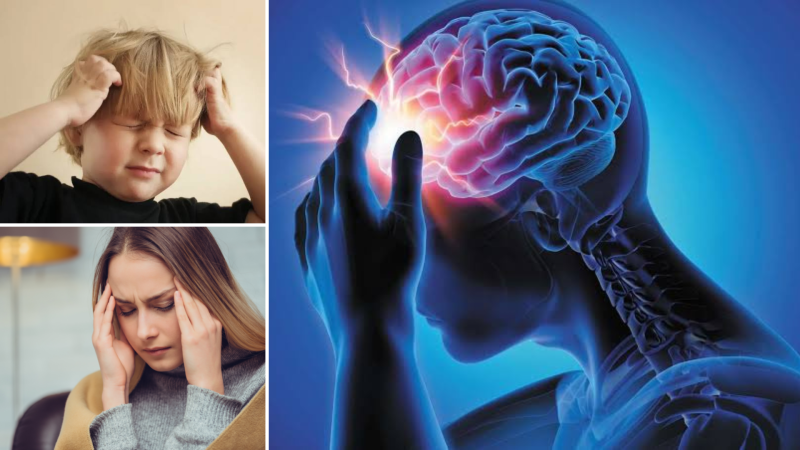Types of headaches and their cure

There are different types of headaches with varying causes and symptoms. Most are short-lived and rarely a cause for concern. However, being able to recognize what kind of headache a person is experiencing can inform them how best to treat it and whether to speak with a doctor.
Migraine: A headache with migraine often involves intense throbbing pain on one side of the head. A person may experience a heightened sensitivity to light, sound, and smell. Nausea and vomiting are also common. A person can also ease attacks by: resting in a dark, quiet place, placing an ice pack or a cold cloth on the forehead and drinking water.
Tension-type headache: Tension-type headaches affect most people at some time. They present as dull, constant pain on both sides of the head. Other symptoms can include:
Tenderness of the face, head, neck, and shoulders
A feeling of pressure behind the eyes
Sensitivity to light and sound
These headaches can last from 30 minutes to several hours.Lifestyle changes and some treatments may help prevent tension headaches. These can include: getting enough sleep, regular exercise and stretching, improving sitting and standing posture, management of stress, anxiety, or depression.
Cluster headache: Cluster headaches are severe and recurrent headaches. They are six times more likely to affect males than females. People describe an intense burning or piercing pain behind or around one eye. Other symptoms can include: watering eyes, swollen eyelid, a blocked or a runny nose, sensitivity to light and sound.
Cluster headaches usually come on suddenly and without warning and last between 15 minutes and 3 hours. People can experience up to eight attacks a day. Any person experiencing these symptoms, which can sometimes resemble hay fever, should consult their doctor.
Exertional headache: Exertional headaches are due to strenuous physical exercise, with the following triggers: Running, jumping, weightlifting, bouts of coughing or sneezing
These headaches are usually very short-lived but can sometimes last up to 2 days. They present as throbbing pain throughout the head and are more common in those with a family history of migraine.
Individuals experiencing cluster headaches for the first time should see speak with a doctor, as they could be a sign of something serious.
Hypnic headaches: A hypnic headache is a rare condition that usually begins when people are in their 50s, but it can start sooner. People also refer to them as “alarm clock” headaches, and they wake individuals during the night. A hypnic headache consists of mild-to-moderate throbbing pain, usually in both sides of the head. It can last for up to 3 hours, while other symptoms may include nausea and sensitivity to light and sound.
Treatment options for hypnic headaches include: caffeine, indomethacin, lithium
Medication-overuse headache: A medication-overuse headache (MOH) sometimes known as a rebound headache is the most common type of secondary headache. A MOH features frequent or daily headaches with symptoms similar to those of tension headaches or migraine. These headaches initially respond to painkillers but then reoccur sometime later.
The only treatment for MOH is to stop taking the medication causing the headaches. However, anyone stopping medication should only do so under the supervision of a doctor.
Caffeine-related headaches: A high caffeine intake of more than 400 milligrams (mg), or around 4 cups of coffee per day can sometimes lead to headaches. In people consuming more than 200 mg of caffeine daily for over 2 weeks, withdrawal may result in migraine-like headaches. These typically develop 12–24 hours after stopping abruptly. They peak at 20–51 hours and can last 2–9 days.
Other possible symptoms include: tiredness, difficulty concentrating, reduced mood or irritability, nausea.
